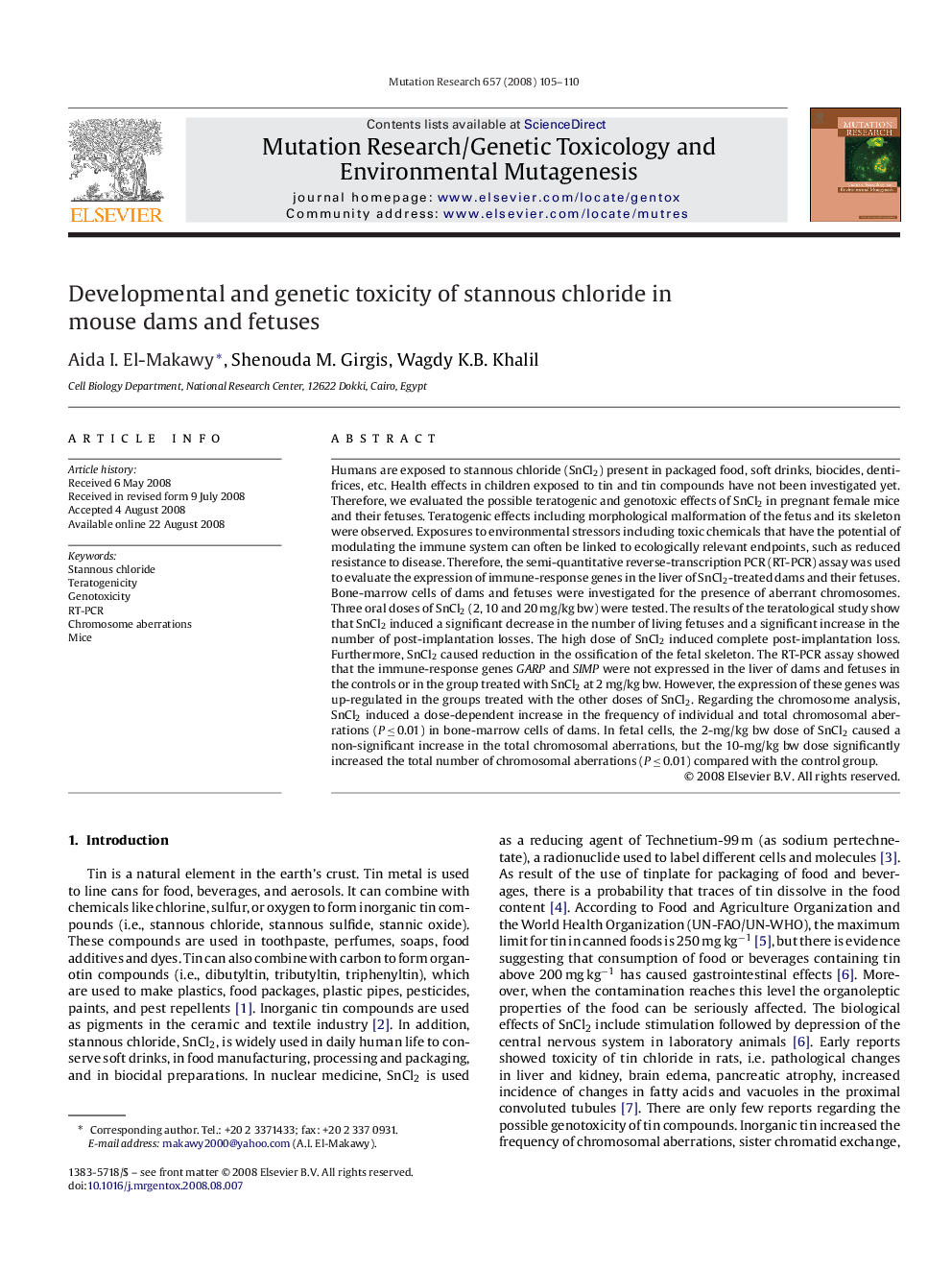| کد مقاله | کد نشریه | سال انتشار | مقاله انگلیسی | نسخه تمام متن |
|---|---|---|---|---|
| 2148808 | 1548631 | 2008 | 6 صفحه PDF | دانلود رایگان |

Humans are exposed to stannous chloride (SnCl2) present in packaged food, soft drinks, biocides, dentifrices, etc. Health effects in children exposed to tin and tin compounds have not been investigated yet. Therefore, we evaluated the possible teratogenic and genotoxic effects of SnCl2 in pregnant female mice and their fetuses. Teratogenic effects including morphological malformation of the fetus and its skeleton were observed. Exposures to environmental stressors including toxic chemicals that have the potential of modulating the immune system can often be linked to ecologically relevant endpoints, such as reduced resistance to disease. Therefore, the semi-quantitative reverse-transcription PCR (RT-PCR) assay was used to evaluate the expression of immune-response genes in the liver of SnCl2-treated dams and their fetuses. Bone-marrow cells of dams and fetuses were investigated for the presence of aberrant chromosomes. Three oral doses of SnCl2 (2, 10 and 20 mg/kg bw) were tested. The results of the teratological study show that SnCl2 induced a significant decrease in the number of living fetuses and a significant increase in the number of post-implantation losses. The high dose of SnCl2 induced complete post-implantation loss. Furthermore, SnCl2 caused reduction in the ossification of the fetal skeleton. The RT-PCR assay showed that the immune-response genes GARP and SIMP were not expressed in the liver of dams and fetuses in the controls or in the group treated with SnCl2 at 2 mg/kg bw. However, the expression of these genes was up-regulated in the groups treated with the other doses of SnCl2. Regarding the chromosome analysis, SnCl2 induced a dose-dependent increase in the frequency of individual and total chromosomal aberrations (P ≤ 0.01) in bone-marrow cells of dams. In fetal cells, the 2-mg/kg bw dose of SnCl2 caused a non-significant increase in the total chromosomal aberrations, but the 10-mg/kg bw dose significantly increased the total number of chromosomal aberrations (P ≤ 0.01) compared with the control group.
Journal: Mutation Research/Genetic Toxicology and Environmental Mutagenesis - Volume 657, Issue 2, 8 December 2008, Pages 105–110